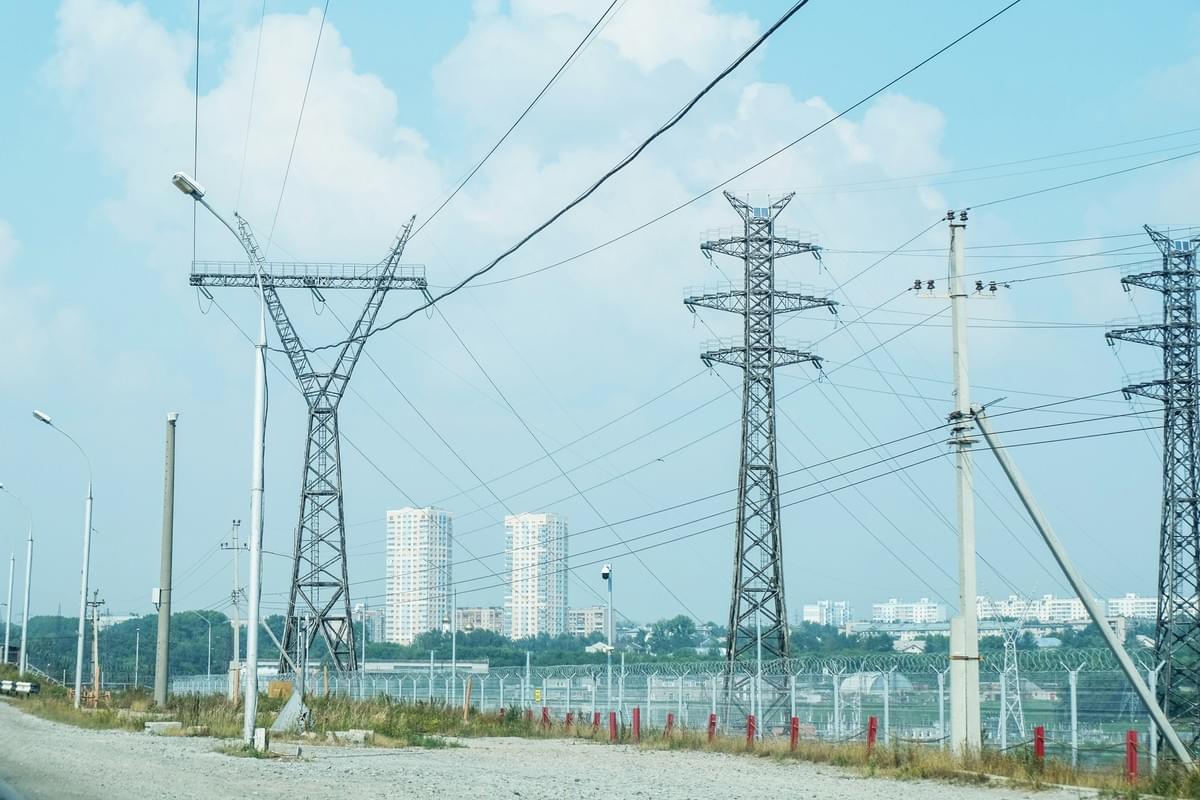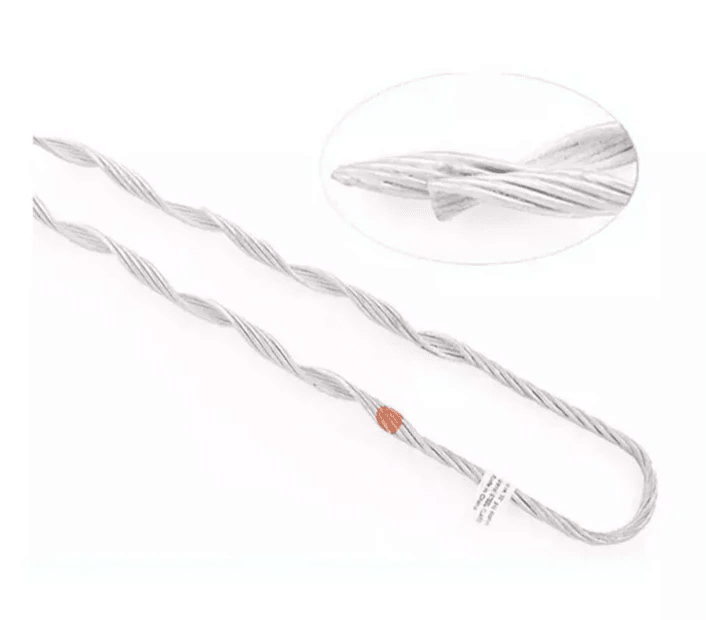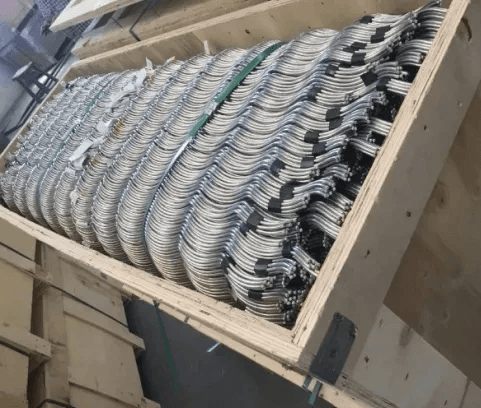Introduction
In the world of electricity distribution, understanding power transmission line systems is paramount. These systems are the backbone of our electrical infrastructure, ensuring that power generated in one location can be efficiently delivered to homes and businesses across vast distances. Without reliable transmission line fittings, the integrity and functionality of these systems would be compromised, leading to inefficiencies and potential outages.
Understanding Power Transmission Line Systems
Power transmission line systems consist of various components that work together to transport electricity safely and effectively. From high-voltage lines to the fittings that connect them, every part plays a crucial role in maintaining a steady flow of energy. Among these components, transmission line fittings such as Transmission Line Adapter Fittings and Transmission line Connector clips are essential for ensuring secure connections and durability.
Importance of Quality Transmission Line Fittings
Quality transmission line fittings are not just accessories; they are critical elements that influence the overall performance and safety of power lines. Poorly made or improperly installed fittings can lead to failures, which may result in costly repairs or even dangerous situations. Investing in high-quality options like a comprehensive Transmission Line Fitting Kit ensures that installations meet industry standards while minimizing risks associated with subpar materials.
Overview of Spark Fittings and Its Offerings
Spark Fittings has established itself as a leader in providing top-notch solutions for power transmission needs. Their extensive range includes everything from robust armor rods to innovative connector clips designed for optimal performance under various conditions. With options tailored for specific applications—like radiator transmission line fittings size—Spark Fittings ensures that customers find exactly what they need for efficient installation and operation.
Types of Transmission Line Fittings

Understanding the various types of transmission line fittings is essential for anyone involved in installation or maintenance. From armor rods to connector clips, each component plays a vital role in ensuring that electrical currents flow smoothly and safely.
Armor Rods: What You Need to Know
Armor rods are a crucial type of transmission line fitting designed to protect conductors from wear and tear due to environmental factors and mechanical stress. These fittings come in various sizes and materials, allowing users to choose the best option for their specific needs, including considerations like radiator transmission line fittings size. Proper installation of armor rods can significantly extend the lifespan of conductors while enhancing overall system reliability.
Selecting the right armor rod involves understanding its material composition—common choices include aluminum or galvanized steel wire—each offering unique benefits. Spark Fittings provides tailored solutions that cater to specific project requirements, ensuring optimal performance under varying conditions. Color coding during installation also aids in identifying different types of armor rods quickly, which is particularly useful for maintenance teams.
Transmission Line Adapter Fittings Explained
Transmission Line Adapter Fittings serve as essential connectors that bridge different components within a power transmission system. These fittings facilitate seamless connections between cables and devices, allowing for efficient energy transfer without compromising safety or performance standards. When selecting a fitting kit, it's crucial to consider compatibility with existing equipment and ensure it meets industry specifications.
The versatility of adapter fittings means they come in multiple configurations suited for various applications—from overhead lines to underground systems—making them indispensable in modern infrastructure projects. Additionally, advancements in material technology have led to more durable options that withstand harsh environmental conditions better than ever before. As such, choosing high-quality Transmission Line Adapter Fittings can enhance both efficiency and longevity.
The Role of Transmission Line Connector Clips
Transmission line connector clips are often overlooked yet play an integral part in maintaining secure connections between cables and other fittings within a power transmission setup. These small but mighty components help ensure stability by preventing movement caused by wind or vibration, which can lead to significant issues over time if not addressed properly. A well-chosen connector clip will not only enhance safety but also improve overall system performance.
When selecting connector clips as part of your Transmission Line Fitting Kit, consider factors such as material strength and corrosion resistance—these elements are critical for long-term durability under varying weather conditions. Furthermore, understanding how these clips work with other fittings helps streamline installation processes while reducing potential errors during assembly or maintenance tasks. Ultimately, investing time into selecting the right transmission line connector clip pays off through improved reliability and reduced downtime.
Choosing the Right Armor Rod Material

When it comes to transmission line fittings, selecting the right armor rod material is crucial for ensuring durability and performance. The choice between aluminum and galvanized steel wire can significantly impact the longevity of your fittings and the overall efficiency of your power transmission systems. Each material has its unique properties, making it essential to consider factors such as environmental conditions, load requirements, and installation specifics before making a decision.
Aluminum vs. Galvanized Steel Wire
Aluminum armor rods are lightweight yet strong, which makes them an excellent choice for many applications in transmission line fittings. They offer better corrosion resistance compared to galvanized steel wire, making them ideal for environments with high humidity or exposure to chemicals. On the other hand, galvanized steel wire provides superior tensile strength and is often favored in heavy-duty applications where robustness is paramount; however, it may require additional maintenance over time.
When evaluating radiator transmission line fittings size or selecting a Transmission Line Fitting Kit that includes armor rods, it's essential to weigh these material characteristics against your specific needs. If you're looking for ease of installation without compromising on strength, aluminum might be your go-to option; conversely, if durability under extreme loads is your priority, galvanized steel could be more suitable. Ultimately, understanding these differences will empower you to make informed decisions that enhance the performance of your transmission line systems.
Custom Solutions from Spark Fittings
Spark Fittings recognizes that one size does not fit all when it comes to transmission line fittings; that's why they offer custom solutions tailored to meet unique project requirements. Whether you need specialized dimensions for armor rods or specific types of Transmission Line Adapter Fittings designed for particular applications, Spark Fittings has got you covered. Their commitment to customization ensures that even the most challenging installations can be tackled efficiently without compromising quality.
Additionally, their expertise allows for seamless integration with existing infrastructure while enhancing overall system performance—an invaluable asset in today's fast-paced energy sector. By collaborating with Spark Fittings on custom projects, you not only gain access to high-quality materials but also benefit from innovative designs that push the envelope in fitting technology. This proactive approach helps ensure that every installation meets industry standards while maximizing safety and reliability.
Application of Color Codes in Installation
Color coding is an often-overlooked aspect of installing transmission line connector clips and other fittings but plays a vital role in ensuring safety and efficiency during installation processes. This system allows technicians to quickly identify different components based on their color codes—streamlining workflows and minimizing errors when assembling complex configurations like those found in Transmission Line Fitting Kits. For example, using distinct colors can help differentiate between various sizes or types of armor rods during setup.
By applying color codes consistently across all components used in power transmission systems—including armor rods—installers can save time while reducing potential mistakes caused by misidentification of parts during critical phases like assembly or maintenance checks. Furthermore, this practice enhances communication among team members working on-site since everyone will understand what each color signifies at a glance—a small detail that can lead to significant improvements in operational efficiency!
Innovations in Power Transmission Technologies

The landscape of power transmission is evolving rapidly, driven by technological advancements that enhance efficiency and reliability. Innovations in transmission line fittings play a pivotal role in this transformation, enabling utilities to optimize their infrastructure while reducing costs. As the demand for reliable power grows, so does the need for innovative solutions that can keep pace with these changes.
Recent Advances in Fitting Designs
Recent advances in fitting designs have revolutionized how we approach power transmission systems. Enhanced aerodynamics and reduced weight are just a couple of benefits that come with modern designs, making installation easier and more efficient. Additionally, new technologies allow for better load distribution across transmission line fittings, minimizing wear and tear over time.
One notable innovation is the introduction of modular Transmission Line Adapter Fittings that simplify the assembly process. These fittings can be easily adjusted or replaced without extensive downtime, ensuring that maintenance is both quick and cost-effective. The flexibility offered by these designs allows operators to tailor their setups according to specific project needs, optimizing performance across varying conditions.
The Rise of Preformed Tension Clamps
Preformed tension clamps have gained significant traction in recent years due to their ability to provide superior grip on conductors while minimizing damage during installation. These clamps are designed to conform perfectly around the cable's shape, distributing stress evenly across the surface area and enhancing overall stability. With a growing focus on safety and reliability, preformed tension clamps represent a crucial advancement in the realm of transmission line fittings.
Their ease of use means fewer tools are required during installation—an attractive feature for utility companies looking to streamline operations. Moreover, these clamps can be integrated into existing systems without extensive modifications or additional hardware such as specialized Transmission Line Fitting Kits. This adaptability contributes significantly to lowering operational costs while maintaining high standards of performance.
Enhancing Efficiency with New Materials
The push towards more efficient power transmission has led manufacturers to explore new materials for their fittings and accessories. Lightweight composites and advanced polymers are being utilized alongside traditional metals like aluminum or galvanized steel wire—offering improved durability without adding excessive weight or bulkiness to the system. This shift not only enhances the efficiency of individual components but also contributes positively to overall energy savings.
In addition, innovations such as corrosion-resistant coatings extend the lifespan of fittings like transmission line connector clips significantly compared to older materials prone to rusting or degradation over time. These advancements help utilities reduce maintenance costs associated with frequent replacements or repairs while ensuring consistent performance under challenging environmental conditions. The integration of these new materials into standard practices represents a significant leap forward for both manufacturers and end-users alike.
Installation Best Practices

When it comes to ensuring that your transmission line fittings perform optimally, installation is key. A proper installation process not only enhances the longevity and reliability of the fittings but also guarantees safety and efficiency in power transmission systems. Here, we delve into critical steps for installing various types of fittings, the necessity of professional guidance, and how to troubleshoot common issues that may arise during installation.
Critical Steps for Proper Fitting Installation
The first step in installing transmission line fittings is to thoroughly assess the site conditions and select the appropriate Transmission Line Fitting Kit tailored for your specific needs. This includes checking compatibility with existing infrastructure, such as identifying the right size for radiator transmission line fittings and ensuring all components are accounted for before beginning work. Once you have everything ready, follow manufacturer guidelines meticulously; this ensures that each fitting—be it armor rods or connector clips—is installed correctly to avoid future complications.
Next, ensure that all surfaces are clean and free from debris before proceeding with installations like Transmission Line Adapter Fittings. Proper alignment is crucial; misalignment can lead to stress on the fittings over time, ultimately compromising their integrity. Lastly, secure all connections firmly but avoid over-tightening, which can damage both the fitting and connected components—balance is key!
The Importance of Professional Guidance
While DIY enthusiasts might feel tempted to tackle installation independently, seeking professional guidance can save time and prevent costly mistakes down the road. Experts bring a wealth of experience with various types of transmission line fittings; they understand nuances that may not be immediately obvious to less experienced individuals. Moreover, professionals can offer insights into selecting suitable materials based on environmental factors or specific application requirements.
Professional installers are also adept at utilizing specialized tools necessary for tasks such as securing Transmission line Connector clips or adjusting tension in preformed tension clamps effectively without risking damage. Their expertise ensures compliance with safety standards and regulations—an essential aspect when working with high-voltage systems where even minor errors could lead to significant hazards. Ultimately, investing in professional services means peace of mind while achieving optimal performance from your transmission line solutions.
Troubleshooting Common Installation Issues
Even with careful planning and execution, issues may arise during or after installing your transmission line fittings—knowing how to troubleshoot them is vital! One common problem involves improper alignment; if you notice unusual wear or stress marks on any component post-installation, it's a sign something isn’t right! Reassess your setup by checking each connection point against manufacturer specifications.
Another frequent issue relates to inadequate tensioning in Transmission Line Adapter Fittings or connector clips; if these aren’t tightened correctly or have been overtightened previously causing deformation—this could lead to failures under load conditions later on! Regular inspections post-installation help catch these issues early before they escalate into larger problems requiring extensive repairs.
Finally, always keep an eye out for signs of corrosion or material fatigue over time—especially relevant when using different metals like aluminum versus galvanized steel wire in your installations! Addressing these concerns promptly will extend the lifespan of your fittings while maintaining system efficiency—a win-win situation!
Future Trends in Power Transmission

In the rapidly evolving world of power transmission, staying ahead of the curve is crucial for efficiency and sustainability. As we explore future trends, it's evident that innovations in materials, technology, and production processes are shaping the landscape of transmission line fittings. Companies like Spark Fittings are at the forefront of these developments, ensuring that their offerings remain relevant and effective.
Eco-Friendly Materials and Solutions
The push for eco-friendly materials is more than just a trend; it's becoming a necessity in power transmission. Manufacturers are increasingly focusing on sustainable options for transmission line fittings, such as biodegradable composites and recycled metals. These eco-friendly alternatives not only reduce environmental impact but also enhance the durability and lifespan of components like Transmission Line Adapter Fittings.
Moreover, using eco-conscious materials can lead to significant cost savings over time due to reduced maintenance needs and extended product life cycles. As consumers become more environmentally aware, they are likely to prioritize companies that offer green solutions in their Transmission Line Fitting Kits. This shift towards sustainability reflects a broader commitment within the industry to minimize ecological footprints while maximizing functionality.
Smart Technologies in Transmission Systems
Smart technologies are revolutionizing how we approach power transmission systems today. With advancements like IoT-enabled sensors integrated into transmission line fittings, operators can monitor performance metrics in real-time, leading to proactive maintenance strategies. This technology enhances reliability by allowing for immediate response to potential issues with components such as Transmission line Connector clips or armor rods.
Incorporating smart technologies also means improved data analytics capabilities that can inform better decision-making regarding system upgrades or replacements. The future will likely see even more integration of smart features into traditional fittings—transforming simple hardware into intelligent components capable of self-diagnosis and reporting issues before they escalate into significant problems.
The Role of Automation in Fitting Production
Automation is set to redefine manufacturing processes across various industries, including power transmission fittings production. By implementing automated systems for creating items like armor rods or customized Transmission Line Fitting Kits, manufacturers can achieve higher precision while reducing labor costs significantly. This increase in efficiency allows companies like Spark Fittings to scale operations without compromising quality.
Additionally, automation facilitates rapid prototyping and customization options tailored to specific applications—such as unique Radiator transmission line fittings size requirements—ensuring clients receive exactly what they need without delay. As automation continues to advance, it will likely lead to innovations not only in production but also in how fitting designs evolve over time based on real-world feedback from users.
Conclusion
In wrapping up our exploration of transmission line fittings, it’s clear that these components play a pivotal role in ensuring the reliability and efficiency of power transmission systems. The variety of options available, from Transmission Line Adapter Fittings to specialized Transmission Line Fitting Kits, allows for tailored solutions that meet specific needs. Understanding the intricacies of each fitting type, including the importance of size—like those pesky radiator transmission line fittings sizes—can make all the difference in installation success and long-term performance.
Key Takeaways on Transmission Line Fittings
First and foremost, quality matters when it comes to transmission line fittings; they are crucial for maintaining system integrity and longevity. Whether you're dealing with armor rods or transmission line connector clips, choosing the right materials and designs can significantly impact overall performance. Additionally, staying updated on innovations in fitting technology ensures you’re not left behind as industry standards evolve.
Spark Fittings’ Contribution to the Industry
Spark Fittings stands out as a leader in providing high-quality solutions tailored for various power transmission needs. Their range includes everything from advanced Transmission Line Adapter Fittings to comprehensive Transmission Line Fitting Kits designed for easy installation and reliability. With a commitment to innovation and customer satisfaction, Spark Fittings continuously pushes boundaries while contributing significantly to improving safety and efficiency across power systems.
The Future of Transmission Line Solutions
Looking ahead, we can expect exciting developments in the realm of transmission line fittings that will further enhance their functionality and sustainability. Eco-friendly materials are becoming more prevalent, addressing environmental concerns while maintaining performance standards. Moreover, advancements like smart technologies and automation in production processes promise to revolutionize how we approach power transmission systems—making them smarter, faster, and more efficient than ever before.

